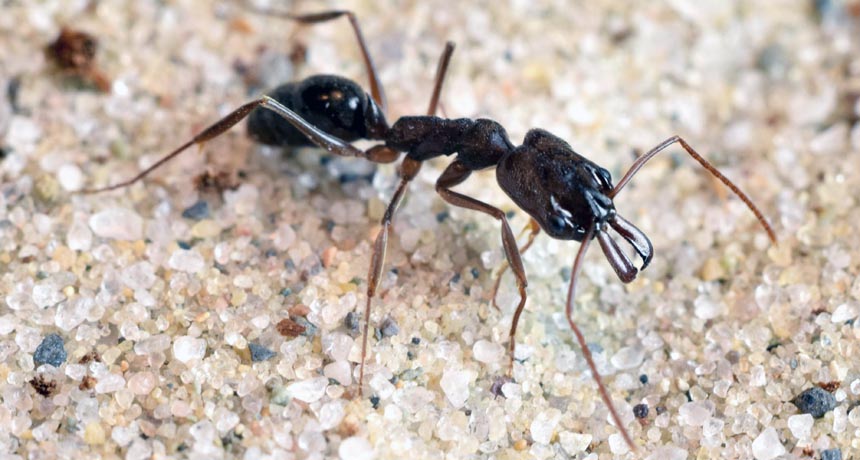Ants snap jaws, shoot skyward, escape death

EMERGENCY JAWS A new test quantifies the death-defying value of trap jaws (shown on Odontomachus brunneus).
F.J. Larabee and A.V. Suarez/PLOS ONE 2015

EMERGENCY JAWS A new test quantifies the death-defying value of trap jaws (shown on Odontomachus brunneus).
F.J. Larabee and A.V. Suarez/PLOS ONE 2015